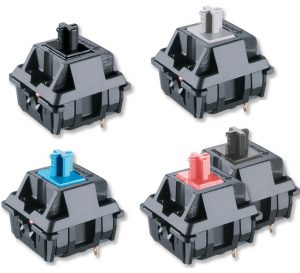Recognizing the Performance of Membrane Changes for Interface Instruments
The functionality of membrane layer switches stands for a significant advancement in customer interface style, incorporating performance with aesthetic flexibility. As sectors progressively prioritize user experience, comprehending the subtleties of membrane switch modern technology comes to be essential.
What Are Membrane Buttons?
Membrane layer buttons are cutting-edge interface gadgets that help with user interaction with digital tools. These versatile elements include multiple layers, consisting of a graphic overlay, spacer, and a printed circuit layer. The design enables a seamless combination right into different electronic devices, enhancing both the aesthetic and functional facets of interface.
Membrane switches are typically used in a variety of applications, from house devices to industrial equipment and clinical gadgets. Their construction generally features a thin account, making them an ideal choice for small designs. The tactile feedback provided by these switches can be crafted to satisfy details individual choices, making certain efficient interaction in between the individual and the tool.
Durability is one more significant advantage of membrane layer buttons, as they are immune to dust, moisture, and chemicals, which enhances their lifespan in demanding atmospheres. Additionally, these buttons can be tailored in regards to form, dimension, and visuals style, allowing for branding and user-specific features. In general, membrane layer changes stand for a useful service for boosting individual experience in electronic devices, incorporating performance with visual allure in an effective way.
Just How Membrane Changes Work
Operating on a simple principle, membrane switches use a layered building and construction to register individual input properly. Each button is composed of multiple layers, including a published circuit layer, a spacer layer, and a top graphic layer, which are designed to work with each other seamlessly. When a customer presses the top layer, it compresses the spacer layer, bringing the conductive elements of the circuit layer into contact with each other.
This call creates a shut circuit, indicating the tool to execute a details function. The layout enables various arrangements, consisting of responsive feedback, which can improve the user experience by supplying a physical feeling upon activation. The materials used in membrane layer switches typically consist of adaptable substrates, such as polyester or polycarbonate, which ensure resilience and resilience versus wear and tear.

Key Advantages of Membrane Layer Buttons

One more substantial advantage is their density. Membrane switches are thin and lightweight, which makes it possible for makers to conserve room in their gadgets without sacrificing capability. This attribute is particularly advantageous in applications where weight and quantity are important considerations.
In addition, membrane buttons are immune to dirt, wetness, and chemicals, enhancing their longevity. This strength expands their life-span and minimizes the need for regular substitutes, leading to expense financial savings in time.
Furthermore, the responsive comments supplied by membrane buttons can be enhanced to improve individual interaction. They can consist of functions such as elevated buttons or distinct clicks, boosting use and customer experience.
Applications Across Industries
Interface tools utilizing membrane switches are widespread in a wide range of sectors, showcasing their flexibility and capability. Membrane Switch. In the clinical industry, membrane buttons are essential to devices such as analysis tools and client monitoring systems, where their sturdiness and convenience of cleaning are vital for keeping hygiene criteria. Similarly, in the auto industry, these switches are utilized in Our site control panel controls and infotainment systems, providing a sleek and contemporary interface for customers.
Furthermore, the customer electronics sector advantages from membrane buttons in home Learn More appliances and handheld gadgets, where compact design and straightforward user interfaces improve customer experience. Industrial applications also take advantage of membrane switches over for control panels in equipment and automation systems, stressing their effectiveness and resistance to extreme atmospheres.
In the aerospace and defense sectors, membrane buttons are utilized in cockpit controls and devices, where dependability and efficiency under extreme conditions are paramount. Additionally, the video gaming sector progressively includes membrane layer switches in controllers and gallery machines, adding to an interesting user experience. Overall, the flexibility of membrane layer switches allows their extensive use across various markets, emphasizing their significance in modern-day interface design.
Future Patterns in Membrane Switch Modern Technology

Additionally, making use of advanced materials, such as polycarbonate and polyester movies, is expected to rise, providing enhanced durability and resistance to environmental stress factors. These materials contribute to the overall durability of membrane layer buttons, making them ideal for harsher industrial applications.
Furthermore, the unification of clever technology, including IoT connection, will certainly make it possible for membrane layer buttons to communicate with other tools and systems, helping with a more interactive customer experience. This fad aligns with the expanding demand for smart devices throughout different markets, from medical care to consumer electronic devices.
Lastly, modification alternatives are expected to broaden, allowing producers to develop bespoke remedies tailored to specific customer needs and choices. These growths will certainly position membrane layer buttons as important parts in the advancement of interface technology.
Conclusion
Finally, membrane switches stand for an essential try this advancement in user interface technology, supplying a trusted and flexible solution for varied digital applications. Their layered building promotes small layout, while attributes such as tactile comments boost customer communication. The longevity against environmental variables additionally strengthens their energy throughout several sectors. As advancements in material science and touch picking up modern technologies continue, the performance and applicability of membrane layer switches are expected to expand, strengthening their value in modern-day digital tools.